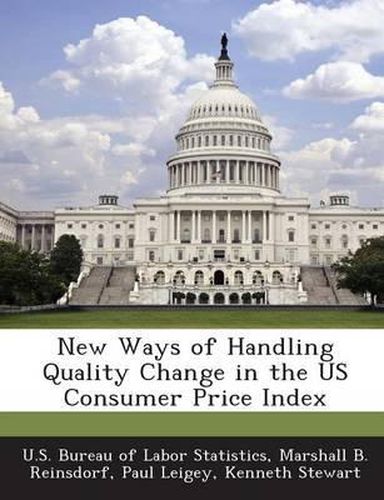Readings Newsletter
Become a Readings Member to make your shopping experience even easier.
Sign in or sign up for free!
You’re not far away from qualifying for FREE standard shipping within Australia
You’ve qualified for FREE standard shipping within Australia
The cart is loading…






Economists widely regard new products as a net source of upward bias in the US Consumer Price Index (CPI) relative to a true cost of living index. This view is based upon the logic that new products must gain acceptance in the marketplace by offering better values to consumers than the products they displace. In the CPI, however, the problem of evolving sets of items available for purchase is particularly pronounced in the areas of apparel and automotive vehicles. In these important cases failing to account for price changes when new products replace old ones leads to a downward bias. Real price rises, rather than price declines, often accompany turnover in populations of clothing items and automobiles because manufacturers tend to time price increases to coincide with the introduction of updated styles or models. The recent debate on the accuracy of the CPI has focused attention on the upward bias from failing to credit consumers’ gains from better or cheaper new products. This is undeniably an important problem, but downward biases from overlooking price increases accompanying new or changing product lines also merit attention. Equally noteworthy are BLS’s procedural improvements that should enable the CPI to reflect most price change coinciding with the appearance of new product models or designs.
$9.00 standard shipping within Australia
FREE standard shipping within Australia for orders over $100.00
Express & International shipping calculated at checkout
Economists widely regard new products as a net source of upward bias in the US Consumer Price Index (CPI) relative to a true cost of living index. This view is based upon the logic that new products must gain acceptance in the marketplace by offering better values to consumers than the products they displace. In the CPI, however, the problem of evolving sets of items available for purchase is particularly pronounced in the areas of apparel and automotive vehicles. In these important cases failing to account for price changes when new products replace old ones leads to a downward bias. Real price rises, rather than price declines, often accompany turnover in populations of clothing items and automobiles because manufacturers tend to time price increases to coincide with the introduction of updated styles or models. The recent debate on the accuracy of the CPI has focused attention on the upward bias from failing to credit consumers’ gains from better or cheaper new products. This is undeniably an important problem, but downward biases from overlooking price increases accompanying new or changing product lines also merit attention. Equally noteworthy are BLS’s procedural improvements that should enable the CPI to reflect most price change coinciding with the appearance of new product models or designs.